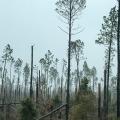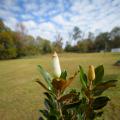Working With a Landscape Contractor
Landscape contractors help to build your dream landscape. A landscape contractor is a specialty contractor who provides the materials and services needed to construct landscapes; or provides the management and maintenance needed to keep projects in prime condition after implementation. Presently, there are approximately 70,000 landscape companies that employ educated, motivated, and qualified people with a diversity of interests and goals. The landscape industry is evolving by utilizing the newest computer technologies, modern business practices, and by employing educated personnel with the skills to increase the breadth of the industry.
Landscape contractors usually have experience and knowledge of local conditions, such as weather and soil that can affect the outcome of landscape projects. They also often have knowledge of special challenges presented by a locale where they are working.
What Services do Landscape Contractors Provide?
Landscape contractors are licensed within their state to assist clients with:
- The construction or installation of all hardscape landscape elements (built materials such as walkways, plazas, gazebos, retaining walls, trellises, fences, irrigation pipes, sculptures, arbors, lighting, and fountains).
- The installation of all softscape landscape elements (natural materials including all plants, soils, mulches, compost).
- Provide maintenance to installed landscapes such as weed control, plantings, pruning, fertilizing, mowing, mulching, watering, and pest control.
- Submit bids for contracting work and providing estimates.
- Hiring or managing subcontractors (such as painting, electricians, etc.)
- Obtain necessary building permits.
- Landscape management and maintenance plans
- Solve site drainage or hydrology problems.
Where Do I Start?
You will want to determine the scope of services that are required before you engage a landscape contractor. Here are a few items to consider before you proceed:
What is My Scope of Work?
Determine exactly the services needed for your property and make a list of all items. For maintenance issues, define what duties are to be performed in what areas. How often does the grass need to be mowed? How often should the shrubs be pruned? When should annuals be replaced and how often?
Create or Obtain a Map of the Property.
It is helpful to have a plan of the property so that areas may be readily identified. Often, a copy of the property plat that you received when you purchased your house is sufficient to give to the contractor.
What is My Budget?
For new landscape construction, determine your total budget for the project. For maintenance, establish what the monthly or yearly fees you can afford.
How Do I Find a Landscape Contractor?
Recommendations from friends, local nurseries and garden centers, or by local landscape architects is a good way to find a landscape contractor. Also, many landscape contractors belong to their national landscape professional network, known as PLANET (PROFESSIONAL LANDSCAPE NETWORK). Visit the PLANET Web site at http://www.landcarenetwork.org for information and a list of licensed professionals by state.
It is recommended to interview several companies to review their pricing structure, experience, training, suitability, and time availability. Ask if you can visit sites they have worked with to review their work, or for a list of references. Check to make sure they are licensed in the state, and if they have workers compensation and liability insurance. Also be sure to ask how they guarantee their work and for how long.
Once you have decided upon a contractor, get a written contract. The contract should specify what you wish to have done, the estimated costs, and the date of completion. Sometimes changes or additions may be made during the work, so be clear what the additional costs may be.
For more information on landscape contractors, visit the PLANET Web site at http://www.landcarenetwork.org.
These factsheets were written by Robert F. Brzuszek, Assistant Extension Professor, The Department of Landscape Architecture, Mississippi State University.
Publications
News
Mississippi weather can damage trees in many ways, making it crucial to select wisely when choosing trees for the landscape.
Don’t believe everything you hear. That piece of advice can be applied to gardening as well. We’ve all done something because a friend said that it works.
Oh, deer! White-tailed deer can be quite the nuisance in the garden. It’s disheartening to see deer ate the flowers in your back yard for a snack.
Success Stories
Engineer designs sub-irrigated planter
The answer would have discouraged most people when Mike Boyles asked Mississippi State University Extension Service agent Jim McAdory about building a permanent, subirrigated planter on a concrete slab.
On December 10, 1817, Mississippi officially joined the United States of America as the 20th state. Two hundred years later, the state governor, legislators, and other elected officials encouraged residents to commemorate the bicentennial. Officials with the Mississippi State University Extension Service heard the message loud and clear.






